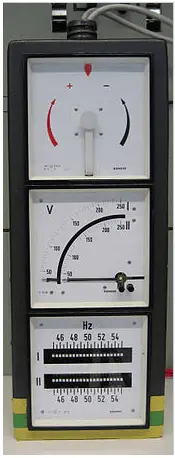
Different methods are being available for the synchronization of generators. All these methods are based on the check of all five conditions discussed above. The common methods used for synchronizing the generators are given below.
Synchronizing Lamps
The Synchronizing lamps method usually uses three lamps connected between the generator terminals and the system terminals. Each of which is rated for generator terminal voltage. The lights will flicker at the frequency proportional to the difference between generator frequency and system frequency as the generator speed changes. When the voltage at the generator is opposite to the system voltage, the lamps will be bright. On the other hand, when the voltage at the generator matches the system voltage, the lights will be dark. At the moment when all the conditions of parallel operation are satisfied, the lamps should be more or less dark. If lamps flicker concurrently, indicating that the phase sequence of the generator matches with the grid. On the other hand, if they flicker one after another, it resembles the incorrect phase sequence.
Synchroscope Method
A synchroscope is a device that indicates the degree to which two systems (e.g., generators) are synchronized with each other. A synchroscope is used for indicating the appropriate moment for synchronization. Synchroscopes measure and display the frequency difference and phase angle between two power systems. The synchroscope has a circular dial over which a pointer is hinged capable of rotating in clockwise and anticlockwise directions. The pointer of the synchroscope will indicate the “fast” or “slow” speed of the generator for the system. If the generator is turning at a lower frequency than the grid, the synchroscope pointer rotates continually in the direction (usually counterclockwise). If the generator is turning at a higher frequency than the grid, the synchroscope pointer rotates continually in the opposite direction (usually clockwise). When these two quantities (difference in frequencies and phase angles) are zero (the pointer stops rotating), it is safe to connect the two systems together. After the machine has been synchronized and is part of the system, it can be made to take its share of the active power by appropriate adjustments of its control valves.